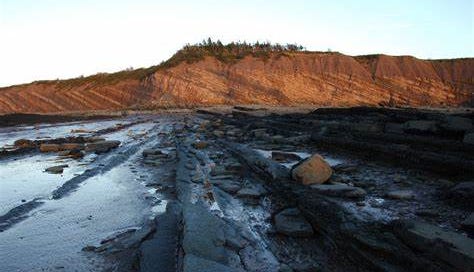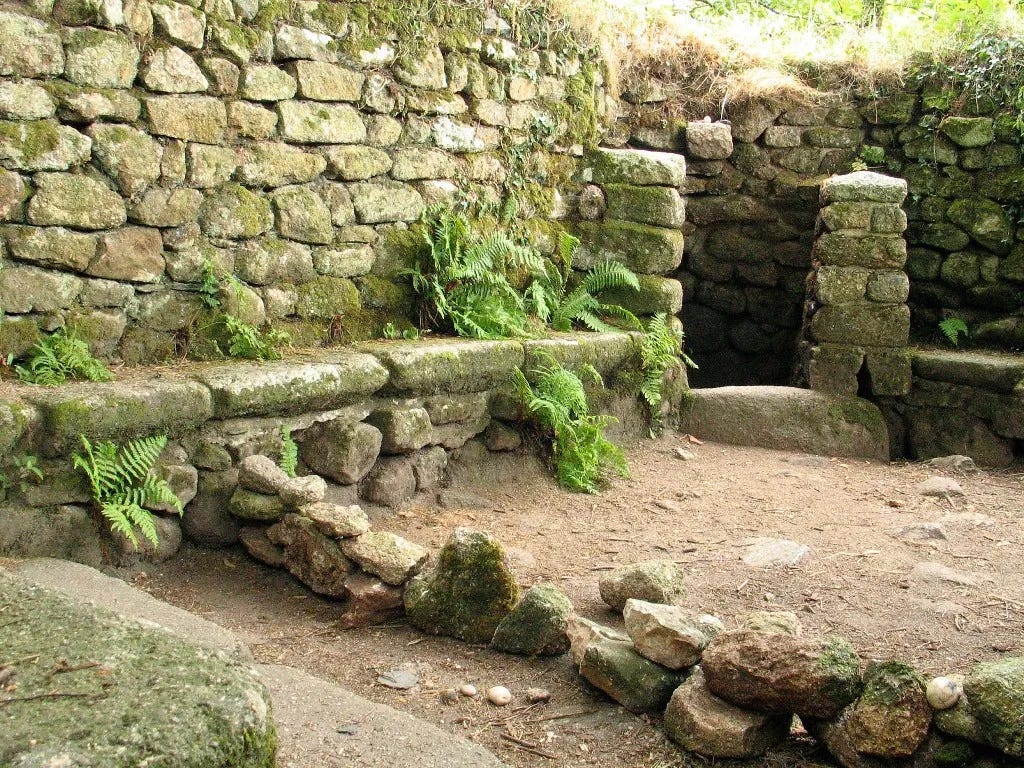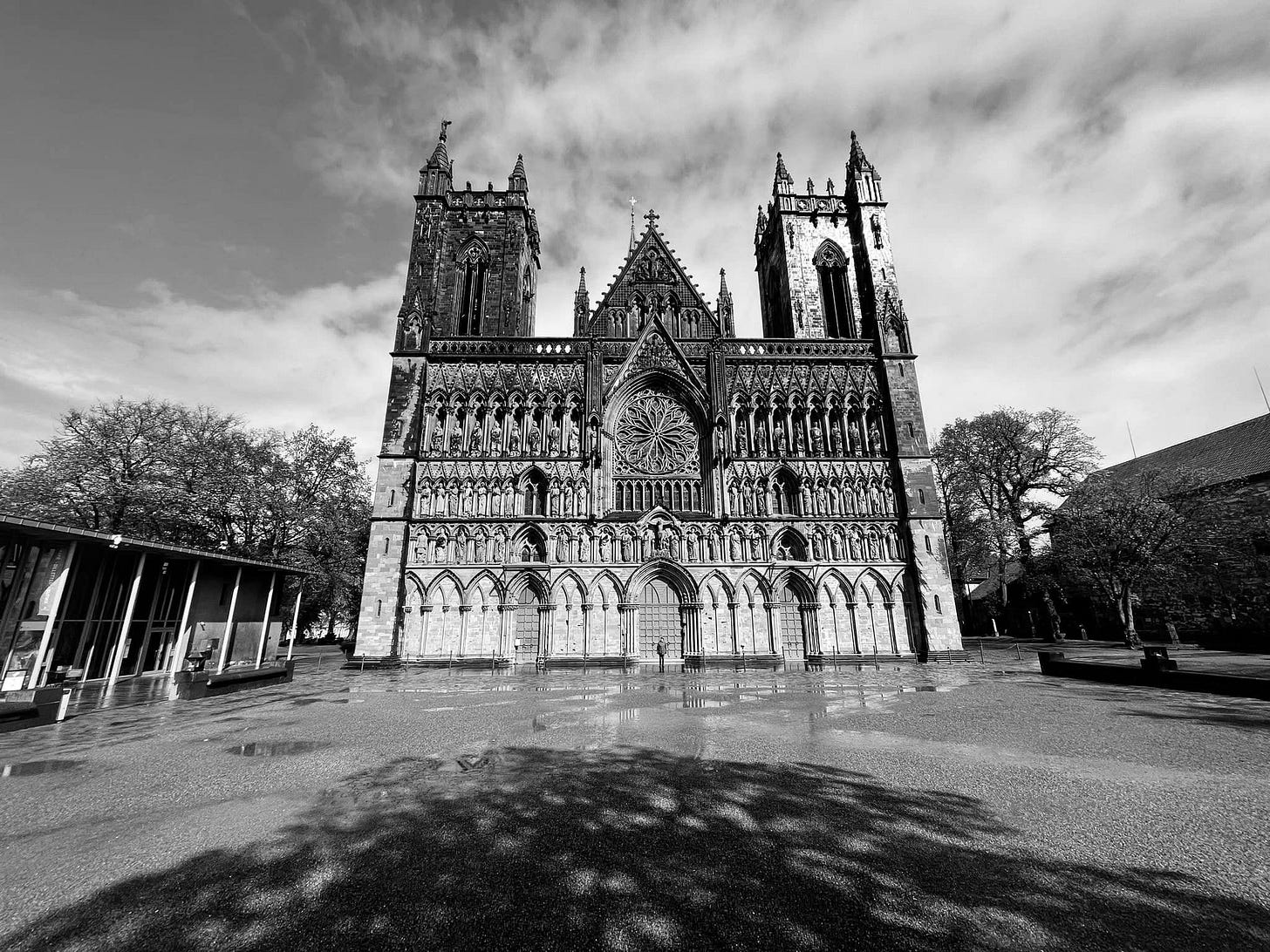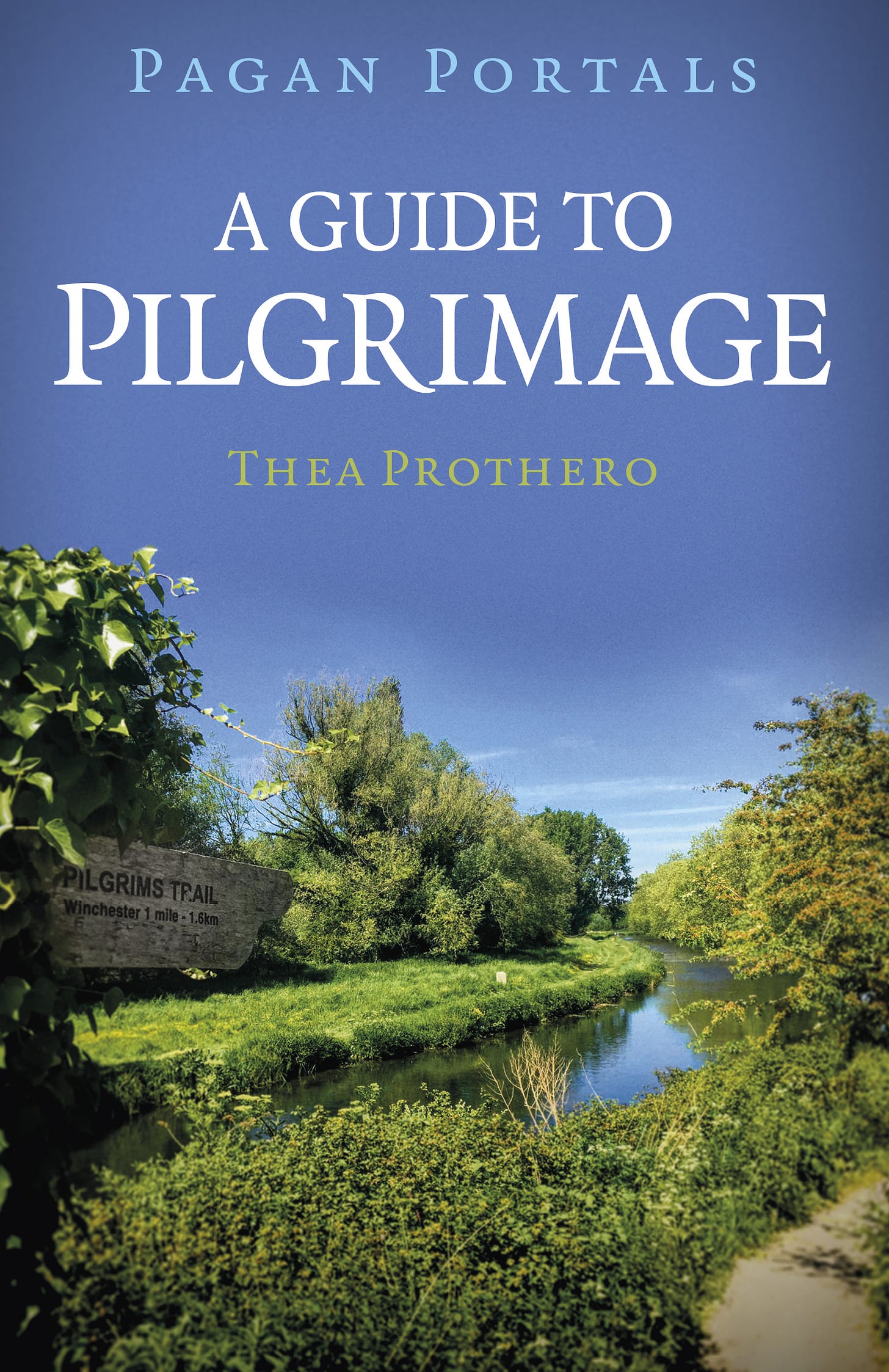In the lead up to the publication of my book, A Guide to Pilgrimage, on the 29th of October, I wanted to share an exclusive part of my book that never made it into the
final edit: My A-Z of Pilgrimage Paths and Routes. I have split it down into sections to make it easier to follow. This week is J - N. Enjoy - and, as always, I’d love to know of any additional sites you would recommend, please comment below.
This is an A-Z of pilgrim routes; it is by no means comprehensive, and I have not been on all of the routes personally. I have, however, tried to include a personal note on as many as possible, both from myself and from people who have walked these paths. These chosen paths are ONLY meant as a way of inspiring you to research and choose a route that appeals to you, personally. I have tried to be as encompassing and as international as possible, but there are bound to be some I have not included either because I did not know of them, or felt they were somewhat repetitive with other routes. Some of paths and routes are not considered pilgrimages, but I believe this is open to interpretation and one size doesn’t fit all.
J
Joggins Fossil Cliffs, Nova Scotia, Canada.
A UNESCO World Heritage Site, the fossil cliffs at Joggins date from the “Coal Age” 310 Millions years ago. Dramatically hewn along the coast and continually washed away the whole area has attracted visitors since they were discovered in the 1820s by Geologists Abraham Gesner, Richard Brown, Thomas Jackson, and Frances Alger. Figures from the site were used by Charles Darwin’s On The Origin of the Species and played a role in the Oxford Debate of 1860. Charles Lyell, the founder of modern geology, described the cliffs and rocks as “The Final example in the World” in his book Elements of Geology 1871.
Today visitors and pilgrims can see fine examples in the Fossil centre and freely access the beach, although it’s recommended to go on an official tour to protect the rocks from over tourism and see the latest finds. A visit could be combined with a longer trek in the area which has many natural beauty spots and scenic viewpoints.
Please check out the official website here: https://jogginsfossilcliffs.net/index.php
The John Muir Way, Scotland.
Let’s start with a little information for those who don’t know who the great John Muir was; he is widely known as the father of national parks in the USA and was instrumental in saving Yosemite Valley among others. He is one of the most influential figures in conservation.
Launched in 2014, which was the centenary of Muir’s death, this is one of Scotland’s great trails and is 134 miles long. Starting Helensburgh in the west and ending at at John Muir’s birthplace, Dunbar on the Firth of Forth in the east. It takes on average around 11 days to complete the walk in one go, or you can cycle in around 5. On completion, you will receive a stamped John Muir passport and different certificates to be collected at the John Muir Birthplace Museum in Dunbar, much like the Camino Passport, as mentioned earlier. The way is easily divided into 10 manageable sections and is fully marked therefore making it easier to navigate. All the information you need is below at the official website:
https://johnmuirway.org/
K
Kumano Kodo Japan
The Kumano Kudo are a series of pilgrim routes that cover the Kii Peninsula in Japan. There are three Great Shrines – Kumano Hongu Taisha, Kumano Nachi Taisha and Kumano Hayatama Taisha which are the holiest of the syncretic Kumano religion. It has been a religious site for over a thousand years, and in 2004 was registered as a world heritage site.
The whole area is a place of nature worship and the three mountains which make up the site, have been worshiped and pilgrims from peasants to emperors have been there and during the Edo period pilgrimage to this area was common practice for the whole nation. Although a separate religion, the Kumano faith carries elements of Shinto, and Buddhists also recognise the deities as gongens, which means Buddha manifesting as kami. The pilgrim routes are filled with Buddhist temples and scriptures.
There are six main routes, some lesser known and many shrines that are not meant to be reached in one day. The whole area attracts up to 15 million people annually.
Please check out the UNESCO web site for more information: https://whc.unesco.org/en/list/1142
Kevelaer, Germany.
Kevelaer is the largest site of Catholic pilgrimage in Europe, with over one million pilgrims visiting every year. It has so for over 360 years with pilgrims honouring the Virgin Mary at the basilica.
The story goes that in 1600s, just before Christmas, Hendrik Busman, a merchant in the town, heard a voice saying, "Here thou shalt build me a chapel". Being a pious man, he started saving to fulfil this commitment but was worried his wife would not agree. However, it so happened that she had a vision. in which she saw a little chapel containing a print of Our Lady of Consolation, all bathed in light. Two passing soldiers happened to be passing and saw the house light up and confirmed the story. The chapel was formally consecrated in 1641.
For more information please see the official website (In German): www.kevelaer.de
L
The Laugavegur Trail, Iceland
The Laugavegur Trail is 55km long and is located in Southern Iceland. It connects the geothermal area of Landmannalaugar, which is only accessible in the summer, to the valley of Þórmörk. The trail is renowned for its spectacular scenery, from peaks and crater lakes to volcanoes and takes 4-6 days, on average, to complete.
In her 2020 book, The Wild Silence, which is a sequel to the Salt Path, mentioned previously, Raynor Wynn and Moth together with their friends Dave and Julie travel to Iceland to do the trail. Moth, who has a degenerative illness, wants to find a walk to help him gather strength for the coming winter, when his illness peaks. Using Walking and trekking in Iceland by Paddy Dillon, (whose other book about the southwest coast path, was the couple’s trail bible in The salt Path,) they set off on a bus from Reykjavik in August. The weather is on the cusp between summer and winter and many of the other hikers give up after the first day, and it becomes a race against time to make it. Crossing ice fields and rivers, Moth remains determined to keep up and complete the trail and Ray dreams of Icelandic socks! One night they chance upon the Northern Lights and Ray is reminded of the reason she is here: “…Moths hand was still in mine and …the light wrapped us in curtains of infinity…”
After a hair-raising experience trying to cross one of the notorious volcanoes, finally they make it to Skogar: “We had walked through ice rain and sulphur to send in a strange unknown land” and enjoyed their first hot meal that wasn’t noodles before catching one of the last buses back to Reykjavik.
Please visit: https://guidetoiceland.is/travel-iceland/drive/laugavegur-hiking-trail for more information on this trail.
Lourdes, France.
As mentioned in my interview with OBOD Druid chief Eimear Burke, Lourdes at the foot of the Pyrenees mountains, is a centre of Catholic and Christian pilgrimage. Millions of visitors come to see the spot that a young girl called Bernadette Soubirous had many visions of the Virgin Mary who, one time, told her to drink from the water beneath her feet. The next day a clear spring sprang up form the site and Bernadette was told to build a chapel.
Pilgrims come to worship there and drink from the spring in order to be healed. Visitors can also confess their sins in the Reconciliation chapel.
Please check out the website for more information: https://www.lourdes-france.org/en/
Lumbini, Nepal,
Lumbini is a major Buddhist pilgrimage site in Napal and a UNESCO World Heritage site. According to tradition it is the birthplace of Siddhartha Gautama who later became the Buddha.
The Lumbini complex is 3 x 1 miles in size and is divided into three sections, the sacred garden, which is the epicentre, with the birthplace of Buddha and the Pillar of Ashoka, and the sacred pond. At the Mayadevi Temple thousands of pilgrims walk from dawn to dusk chanting and meditating every day. The other two parts are Monastic zone, and the Cultural Centre and the whole complex is bounded by monasteries.
For more information, please check out the official UNESCO website: https://whc.unesco.org/en/list/666
M
Madron Well, and Chapel Cornwall UK
St. Madron’s well is a scheduled ancient monument and the remains of a 14th century chapel overlaying a much older Celtic structure. The well is a natural spring to the west and is often found with clooties and offerings hanging nearby. Set in a small woodland near to Lands’ End, the well is atmospheric and often it is said that time appears to stand still.
Renowned for its healing properties, like many holy wells throughout the world, many also come to leave a clootie which is often a piece of fabric that is immersed in the well water and tied to a tree nearby. The person leaving the fabric may wish for healing for themselves or a loved one. Clooties are somewhat controversial as many are not made from environmentally friendly materials and are therefore considered littering, they may also damage the tree or wildlife.
An old May Day (Beltane) tradition saw young people, (mainly girls,) drop two pieces of straw or grass fastened together with a pin into the water, the rising bubbles would show them how many years they had before getting married.
For more information, please visit the Cornwall Guide: https://www.cornwalls.co.uk/history/sites/madron_well.htm
Maggie Wall’s Memorial, Scotland
Maggie Wall was tortured, strangled and then burnt as a witch in 1657 during the Scottish Witch Trials. Her monument stands near to Dunning in Perthshire and is 20ft tall and built to resemble a cairn. It is the only known monument to be built in Scotland in memory of someone burnt as a witch.
Although there are no official records of whether Maggie Wall even existed many theories have been discussed about who she may have been. Author Geoff Holder concluded in his book Paranormal Perthshire, that Maggie Wall may be a composite figure, representing the witches burned during this time and named after the area around it.
Either way it’s a poignant and powerful place to visit and remember that over 1,500 women were murdered in one of the biggest miscarriages of justice at this time. Scotland killed more supposed witches than any other country, and there are many memorials throughout the country. I would recommend Gregor Stewart’s book, “Witch Memorials Of Scotland” 2019, ISBN: 978-1709583315. and Spooky Isles article: https://www.spookyisles.com/witch-memorials-scotland/ with a recorded interview.
For information about Maggie Wall’s memorial: https://www.atlasobscura.com/places/monument-for-a-witch-called-maggie-wall
N
Nidaros Cathedral Trondheim, Norway.
This world-famous cathedral is the convergence point of St Olav’s Pilgrimage routes throughout Norway, some are very long at 643km such as the Gudbrandsdalsleden route which takes over 30 days and is Norway’s longest hiking trail as well as a pilgrim route. The terrain varies form easy to demanding and traverses through Dovrefjellet mountain area.
Smaller routes to the cathedral include the 84km path from Singsås to Trondheim which is through forests and visits St Olavkippen which was said to be originally a place of pagan worship, and there was supposedly a battle between the force of Christianity, Olav Haroldsson and creatures such as trolls and goblins. This resulted in the rock being spilt in half and today it is marked by a tree cross.
I visited the area in 2023 and followed the path for a day (18km) towards Trondheim along Østerdalsleden along Nidelven river. It is an area of exceptional beauty and tranquility. The walk is silent except for the occasional sounds of wind, rain, and river. There are old power stations that used to supply Trondheim, but these have been reclaimed by the environment and as you gradually reach urban areas is feels as though you have been truly cleaned by nature. We reached the cathedral after the visitor centre and cathedral was closed, so the area was pretty empty except for other late pilgrims. The cathedral is the burial site of St. Olav.
If you are interested in walking in Norway, there are many great websites and guided pilgrimages. There are shelters and everything is well sign posted.
Please check out the St Olav Ways website: https://pilegrimsleden.no/en/
And for more information about the cathedral:
https://www.nidarosdomen.no/
The North Downs Way, UK.
This is a long-distance walking trail that starts at Farnham and finishes at Dover. The route passes along the Surrey Hills, along with the Kent Downs, both Areas of Outstanding Natural beauty. (AONB). The walk was opened in 1978 and splits into two paths by Broughton Lees. The South Path is 125 miles long and goes via Wye and the North path is slightly longer at 131 miles, going via Canterbury, a renowned place of Christian Pilgrimage. The paths weave and follows parts of the Pilgrims Way. (Please see under P). Both paths rejoin at Dover. The route takes approximately 12 days to complete.
The trails visit castles, cathedrals, bishops’ palaces, WW11 fortifications, and many stately homes, along with many inns and pubs to whet your appetite. The landscape is rich in wildlife and grassland habitats, including passing by the famous white cliffs of Dover.
For more information please visit the National Trails website: https://www.nationaltrail.co.uk/en_GB/trails/north-downs-way/
My book A Guide to Pilgrimage is published by Moon Books on the 29th of this month.












